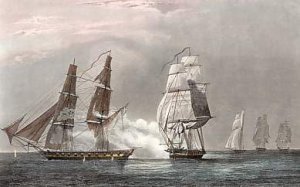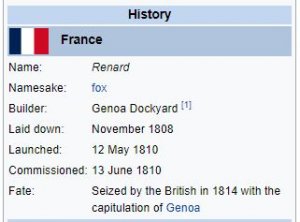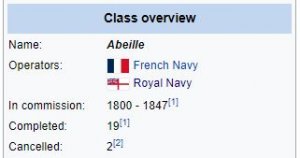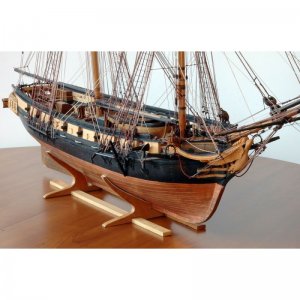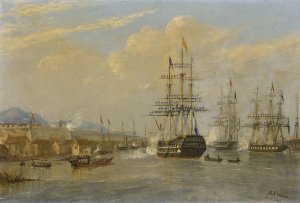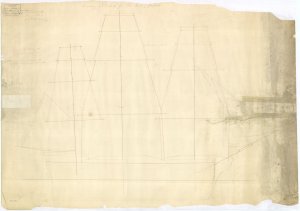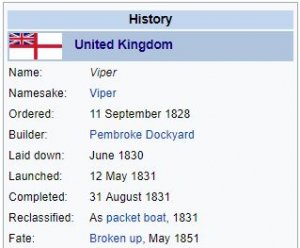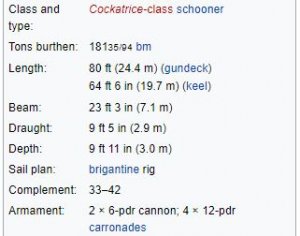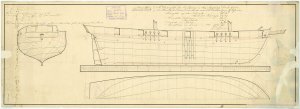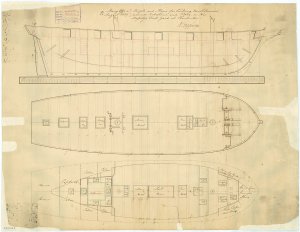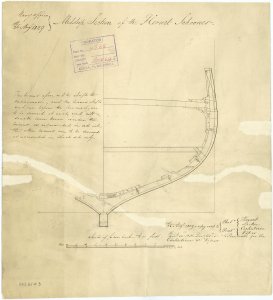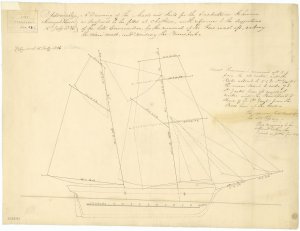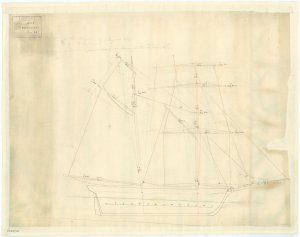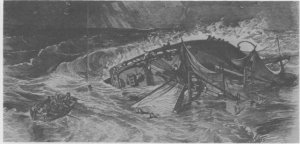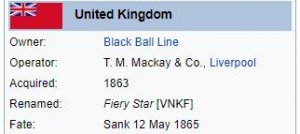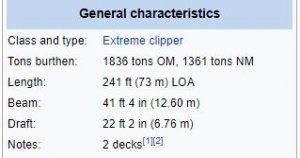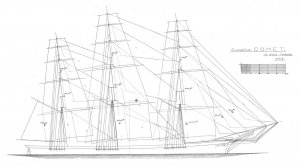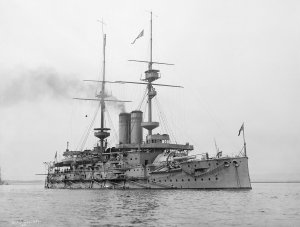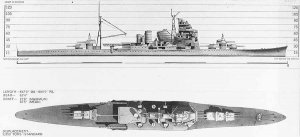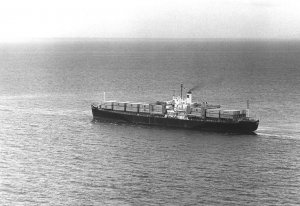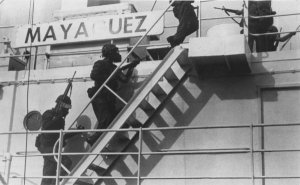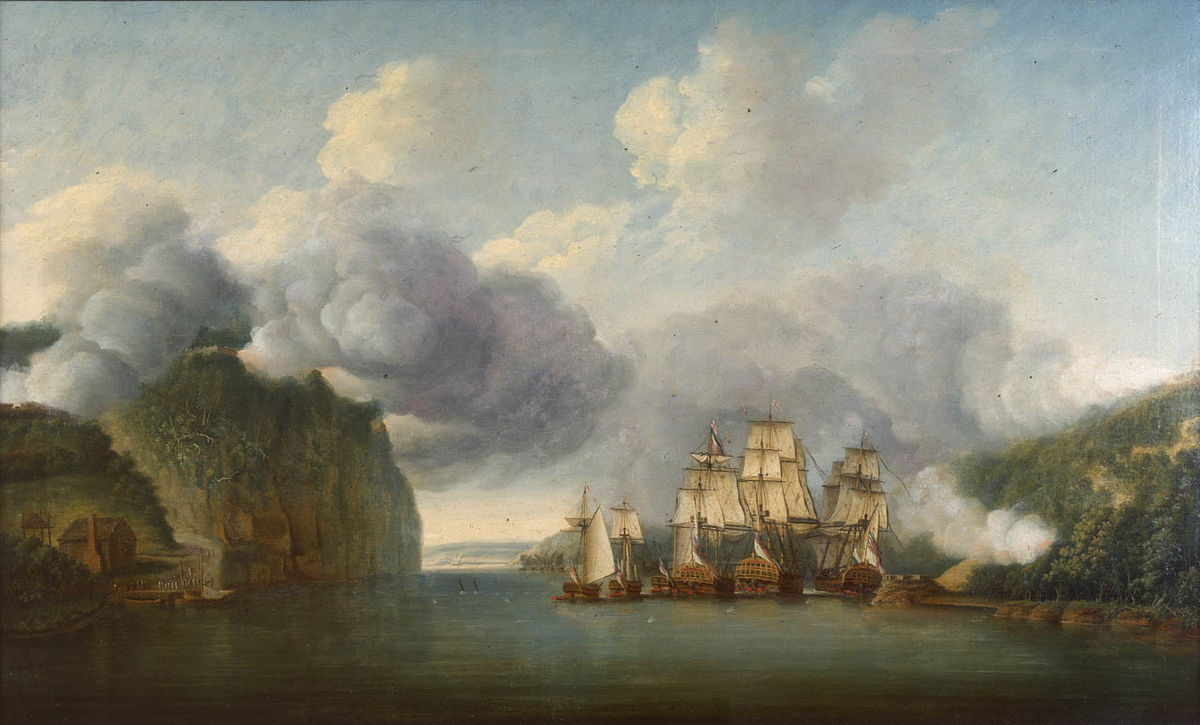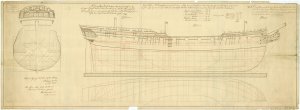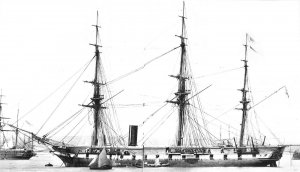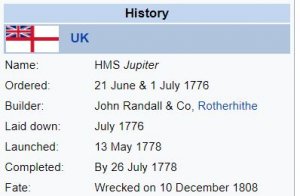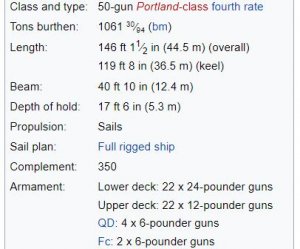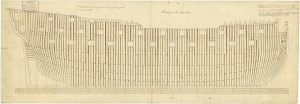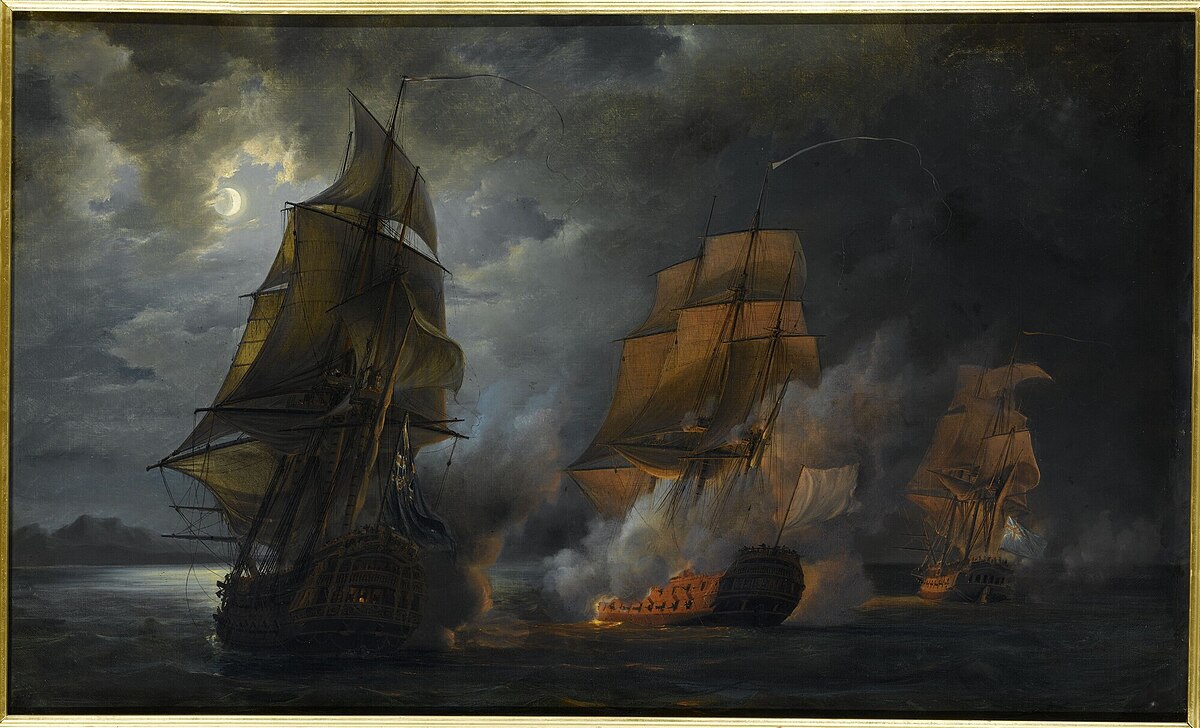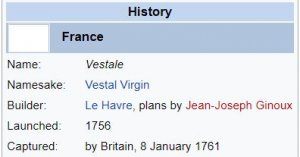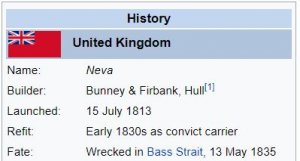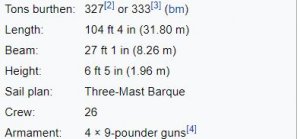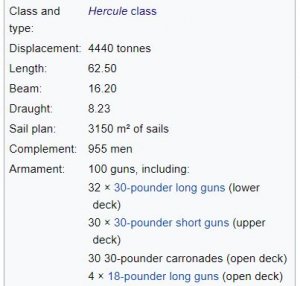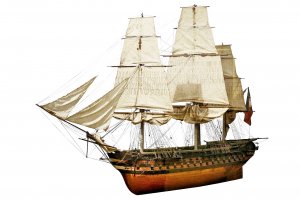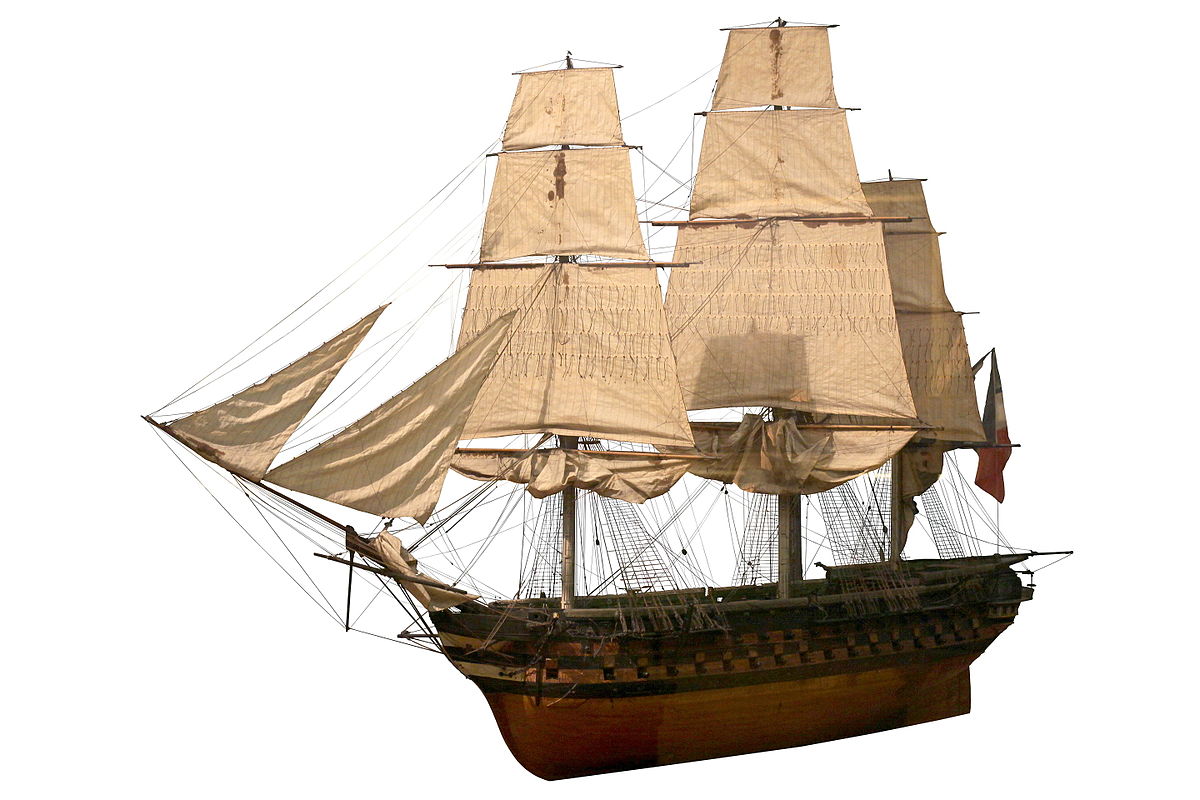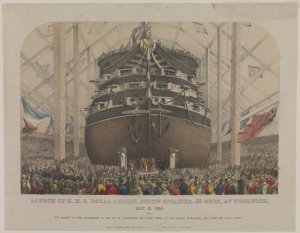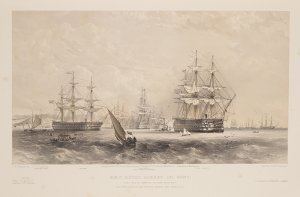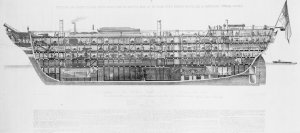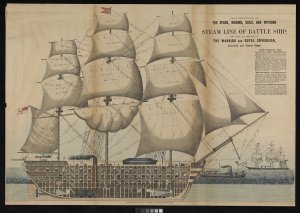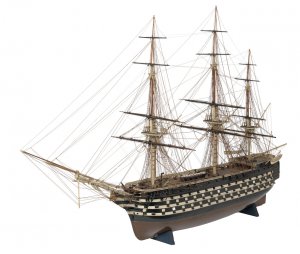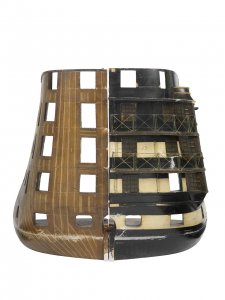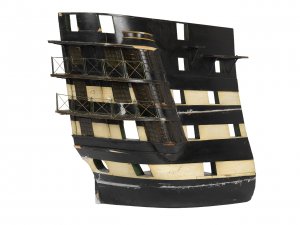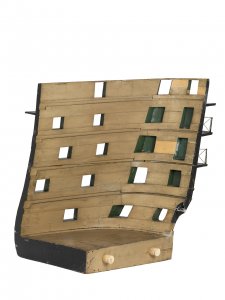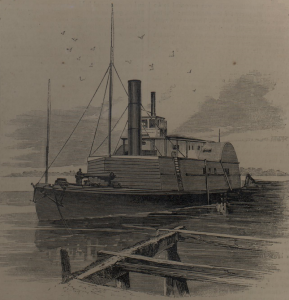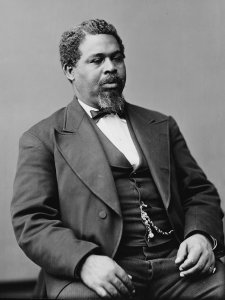Today in Naval History - Naval / Maritime Events in History
13 May 1797 – French Jalouse, an 18-gun Belliqueuse-class brig-corvette of the French Navy, was captured by HMS Vestale
Jalouse was an 18-gun
Belliqueuse-class brig-corvette of the
French Navy, built to a design by Pierre-Alexandre-Laurent Forfait, and launched in 1794 at
Honfleur. The
Royal Navy captured her in May 1797 and took her into service under her existing name. In British service she served primarily on the North Sea station where she captured three small French privateers, and many Dutch merchant vessels. She also participated with other British warships in two or three major cutting-out expeditions. She was broken up in 1807.
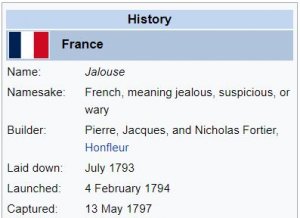

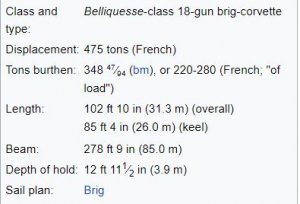
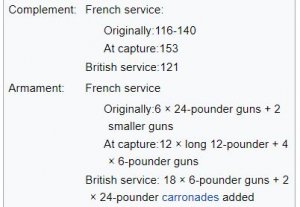 French service
French service
Between 24 March 1794 and 25 August,
Jalouse was at Le Havre and Ostend, and under the command of
lieutenant de vaisseau Astague.
On 5 October 1795
lieutenant de vaiseau Pierre-Édouard Plucket took command of
Jalouse. At the time she was apparently armed with 12 guns, and had a crew of 150 men.
Under his command,
Jalouse in a 15-day cruise in 1795 captured seven prizes and 52 men.
From 7 March 1797 until her capture, French official records confirm that
Jalouse was under Plucket's command, and based at
Flessingue. From there she cruised the North Sea, and arrived at Bergen. Sailing from Bergen, she captured three prizes, including a
whaler of eight guns and 42 men. He also burnt three vessels under the guns of a fort at
Berwick.
On 27 March, or 7 April (records differ),
Jalouse encountered the sloop
Tisiphone in the North Sea. An inconclusive 11-hour engagement ensued.
Afterwards Plucket reported that he had engaged a 38-gun frigate; according to a French account, Captain James Wallis of
Tisiphone reported that he had engaged a 28-gun frigate. Supposedly, when Plucket's English prisoners from prizes returned to Britain and reported that
Jalouse was a 12-gun brig, Wallis was court-martialed and reduced in rank. There seems to be only passing mention of the engagement in one English-language source that makes no mention of a court martial and that identifies
Tisiphone's opponent as the privateer
Naïade.
After the engagement with
Tisiphone,
Jalouse returned to Bergen. There she replenished her store of munitions, recruited 20 Dutch sailors to rebuild his crew, and then set out for Flessingue. On the way she captured two more British vessels.

 Capture
Vestal
Capture
Vestal, under the command of Captain Charles White, captured
Jalouse at about 5a.m. on 13 May 1797 near Elsinor after a chase of about nine hours and running about 84 hours. For an hour and a half during the chase
Jalouse fired her stern chasers, two long 12-pounder guns. White was able to bring
Vestal alongside
Jalouse and fired three broadsides before she
struck, having suffered great damage to her masts and rigging. At the time of capture,
Jalouse had 16 guns, though she was pierced for 20, and had shifted some guns to the vacant ports. Her armament consisted of twelve "very long 12-pounders", and four 6-pounder guns. Her commander, "C. Plucket", had a crew of 153 men, two of whom were killed and five of whom were wounded.
Vestal suffered no casualties.
Vestal brought
Jalouse into the Humber.
The British took their French prisoners back to England. Plucket managed to escape and return to France. The court martial for the loss of
Jalouse then acquitted him.
British service
Jalouse underwent fitting out at Deptford between 24 July and 16 October 1797. Commander John Temple commissioned
Jalouse in September 1797 for the North Sea.
Jalouse's first documented capture was the merchant vessel
Gerrit Hendrick Groote, which
Jalouse captured on 7 May 1798. Later that month, on 25 May,
Jalouse captured
Mercurius, which was condemned as
droit of Admiralty.
In June and July
Jalouse captured
Zeelust,
Antonella,
Anna, and
Surprize.
On 22 February 1799
Jalouse captured
Hermina. The next day
Jalouse was off the Texel when she captured the French privateer brig
Jason.
Jason, of Dunkirk, was armed with 14 guns and had a crew of 52 men.
Lieutenant Dawes, of the
hired armed cutter Phoenix arrived at Yarmouth Roads on 9 March with intelligence from the Haak Sands at the mouth of the
Texel. He reported that he had observed 20 enemy vessels moored as they had been all winter. He further reported that
Jalouse was always on site, so that Temple would readily observe any enemy activity. Dawes also brought with him a letter from Temple stating that prisoners from
Jason had reported that 15,000 troops in France were to march to Holland to be embarked on transports.
Jalouse was in company on 10 April with the hired armed cutters
Nancy and
Phoenix. They shared the proceeds of the capture of the brig
Maria. Two days later
Jalouse and
Nancy captured
Unvernkorff. Two days after that,
Jalouse and
Nancy recaptured
Friendship.
Jalouse and
Hound recaptured the cutter
Rover on 10 May. On 4 June
Circe and
Jalouse recaptured the sloop
Ceres.
Jalouse recaptured both off the coast of Norway and sent them into Yarmouth.
Rover had been sailing from Riga to Hull when captured, and
Ceres, of Berwick, had been sailing from Leith to London.
During the night of 27 June Temple and Captain James Boorder of
Espiegle volunteered to cut out some Dutch gunboats lying at the back of the island of
Ameland, so Capt. Winthrop of
Circe ordered
Pylades,
Jalouse,
Espiegle, and
Tisiphone to join him in anchoring as close to the shore as possible in order to assist them. When the British boats arrived, they found that their targets were pulled up on shore where the cutting out party could not reach them. The British instead took out 12 merchant vessels, six with cargoes and six in ballast, and retreated. There were no British casualties, even though Dutch shore batteries fired on the attackers. A later prize money notice identified some of the Dutch vessels as
Twee Gebroders (Dirks, master),
Twee Gebroders (Jansen, master),
Jonge Evert,
Vrow Regina,
Anna Elizabeth,
Vrow Trentje, and four fishing vessels.
Then on 10 July
Jalouse was a part of a small squadron consisting also of
Espiegle,
Courier,
Pylades, and the hired armed cutter
Nancy, all under Winthrop's command in
Circe. The boats of the squadron rowed for 15 or 16 hours into the Watt at the back of Ameland. There they captured three merchant vessels carrying sugar, wine and brandy, and destroyed a
galliot loaded with ordnance and stores.
On 24 November 1799 Admiral Lord Duncan sent
Jalouse find a privateer that had been operating off the coast.
Jalouse encountered the privateer on the 29th. and she struck after a chase of 5 hours. She was a brand new, copper-bottomed lugger called
Fantasie, of 14 guns and 60 men. Tmple was able to rescue the four masters and 35 seamen of four laden colliers that the privateer had taken the previous day close in to
Flamborough Head. He then went off towards Ostend in pursuit of the prizes and on the 30th he retook
Sally. of Lynn.
Jalouse brought
Fantasie into Harwich.
On Saturday 5 April 1800
Jalouse took the small French privateer cutter
Inattendu. She was armed with two guns and small arms, and had a crew of 25 men. She had captured nothing since leaving Ostend the previous Wednesday.
A month later, on 4 and 5 May,
Jalouse was among the vessels that captured 12 outward-bound Greenland ships. The other vessels included the
hired armed cutters Fox, and
Marechal de Cobourg, and
Cruizer, though most were much larger and included
Monmouth,
Glatton,
Ganges,
Director,
America, among others.
[30] Also on 5 May,
Jalouse captured
Johanna Eleonora, Malmberg, master, and
Luste en Friede, Straud, master.
On 13 May
Jalouse captured
Vrouw Etje,
De Haan,
Augustina, and
De Brock.
In 1801 the Honorable
Frederick Paul Irby took command of
Jalouse, then operating in the
North Sea.
Jalouse, under Irby's command, recaptured the sloop
Friends, of
Airth on 3 February. Four days later
Jalouse recaptured the brig
Providence, of Sunderland.
[33] The privateer
Victoire had captured
Providence and
Jalouse had to cut
Providence out of Norway.
Jalouse, while under his command, was instrumental in saving
Narcissus when she was driven ashore on the coast of Holland. Irby's youngest brother, Charles Leonard Irby, was a midshipman on board
Narcissus, having joined her on 23 May.
Jalouse and
Marshal de Cobourg, together or singly, captured several Dutch vessels between 22 and 24 July:
Negotie and
Zeeward (22 July;
Jaloufe and
Marshal de Cobourg)
Hoop (same)
Jusfrouw Dirkje (23 July;
Jalouse and
Marshal de Cobourg)
Hoffnung (24 July;
Jalouse)
Fortuna (
Jaloufe)
On 31 July
Jalouse and
Lynx captured
Brockmerlust, with the capture of
Neptunus following on 1 August. The next day
Jalouse and
Lynx captured
Vrow Caterine.
Squirrel,
Lynx, and
Driver captured three ships on 6 September:
Snelle,
Jager, and
Engesende.
Jalouse shared in the proceeds by agreement with
Lynx and
Driver.
On 26 September
Jalouse captured the
dogger Fortuna.
Squirrel,
Driver,
Bittern, and
Jalouse shared in the proceeds of the capture on 5 October of
Carolina Wilhelmina.
Jalouse also captured smugglers. On 25 March 1802 she seized a "Tub Boat and Quantity of Spirits".
[43]
Irby received promotion to
post captain on 14 April 1802. Commander Christopher Strachey then replaced him on the 29th.
Jalouse continued to operate off Calais.
On 19 May 1803
Jalouse, under Strachey's command, captured
Jong Jan Pieter.
Jalouse shared the prize money with
Grampus and the gun-brigs
Censor and
Vixen, with whom she had been in company.
Lloyd's List reported that
Grampus and
Jalouse had sent into
the Downs a large Dutch ship from Surinam bound for Rotterdam. That same day
Jalouse also captured
Deux Freres. Two days later
Jalouse captured
Speculation.
The frigate
Immortalité, together with
Jalouse and
Cruizer, captured two French gun-vessels, the schooner
Inabordable and the brig
Commode on 14 June 1803 after the French vessels had run themselves ashore under the protection of the guns of a shore battery at
Cap Blanc Nez near
Sangatte. After about an hour's firing by the British warships, and the French batteries and gun-vessels, the boats of the three British ships were able to take possession and refloat the two gun-vessels. Each of the French gun-vessels was armed with three 24-pounder guns and one 8-pounder gun. The only casualty was one man from
Jalouse, who was badly wounded. Later reports described the two French vessels as gun-brigs, and gave their names as
Inabordable and
Mechanté. The Royal Navy did not take either into service.
Lucius Curtis received promotion to
commander on 16 November 1804, and assumed command of
Jalouse, then in the
Mediterranean Fleet, later that month.
A convoy from Smyrna arrived at Malta on 2 January 1805, and the convoy left for England on 4 January.
Jalouse had escorted the convoy from Smyrna and she continued on as an escort as far as western Sicily. In June 1805 Curtis commissioned
Rose at Portsmouth.
In an enclosure to a letter dated 7 October 1805, Admiral Lord
Nelson wrote, "Jalouse,
Childers, and
Merlin being unfit for the service of this Country, are ordered home with the first Convoy to be repaired".
Fate
Merlin and
Childers went on to serve for some more time. However,
Jalouse was paid off in May 1806. She was then broken up at Woolwich in March 1807.
HMS Vestal was a 28-gun
Enterprise-class sixth-rate frigate of the
Royal Navy.

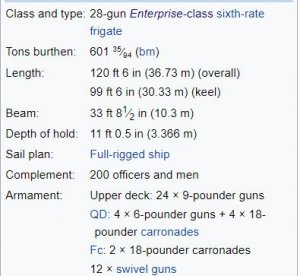


en.wikipedia.org
https://collections.rmg.co.uk/colle...el-321615;browseBy=vessel;vesselFacetLetter=J
https://en.wikipedia.org/wiki/HMS_Vestal_(1779)
https://collections.rmg.co.uk/collections.html#!csearch;searchTerm=Vestal_(1779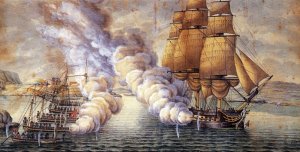

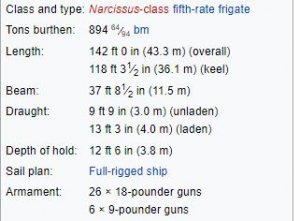




 en.wikipedia.org
https://collections.rmg.co.uk/colle...el-352679;browseBy=vessel;vesselFacetLetter=T
en.wikipedia.org
https://collections.rmg.co.uk/colle...el-352679;browseBy=vessel;vesselFacetLetter=T







